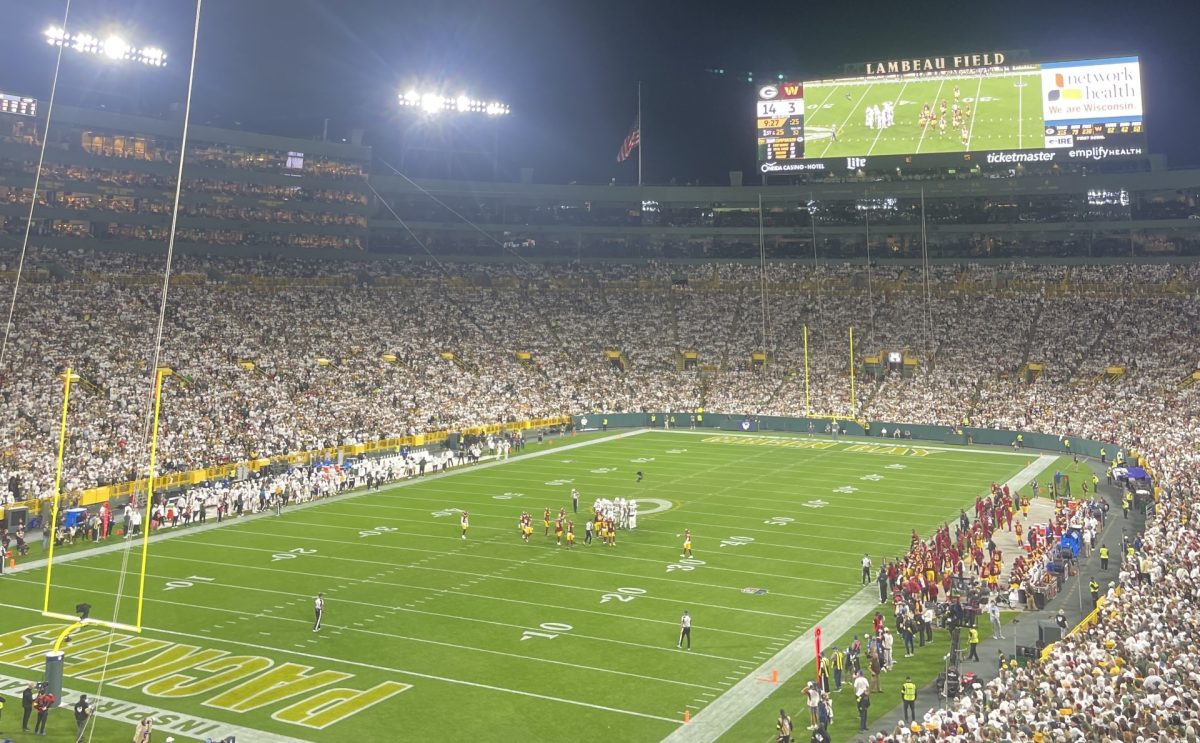The University of Wisconsin Oshkosh prides itself in its sustainability efforts and had even been recognized as the third most sustainable University in the nation by to Sierra Club Magazine. Although the University strives for less waste and pollution, there are still some changes that need to be made campus wide. It may seem small to most, but the disposable plastic water bottle has been sneaking into student’s lives and then without much thought becoming waste in our environment. Intern for the campus sustainability office on campus, Emily Husar Martin, reveals the amount of landfill waste, recyclables, and organics UWO produced last year in 2014. “Campus disposed 842.28 tons of materials to the solid waste landfill in the year of 2014 and diverted 446.51 tons recyclables and organics in the year 2014, Martin said. Therefore, making a total of 1288.79 tons. That is how much the campus produced in the year 2014.” Surely the disposable plastic water bottle was a component of the waste on campus. Plastic water bottles are littered on the coasts of waterways and the side of the road more often than they make it to a recycle bin. The difference between throwing an apple on the ground and throwing a disposable water bottle on the ground is that plastic is impossibly hard to decompose. Plastic in the natural environment takes 450 years to decompose, and can take up to 1000 years in a landfill. Valley Water’s website states that “80% of plastic water bottles will just become litter.” And an article in Fast Company Magazine reveals “an average American family drank 167 plastic bottles but only 38 of those made it to the recycle bin.” Imagine if all 7.1 billion people on this planet lived that lifestyle; our planet, and campus, would look like a dump. Aside from landfills, many people do not consider the secondary effects of plastic waste. The amount of fossil fuels, energy and water that are used in the process of making and transporting these bottles is alarming. Think about how much gas an average student uses in one year. Pacific institute revealed that “making bottles to meet America’s demand for bottled water uses more than 17 million barrels of oil annually, enough to fuel 1.3 million cars for a year and that’s not even including the oil used for transportation.” Even though most students feel like they are informed about the disposable plastic water bottle epidemic they still fall into the ruse. Marketing and advertisements have convinced some students that bottled water is cleaner and more pristine than tap water,when in reality, the federal government requires more stringent testing for municipal tap water than for bottled water. Sophomore Katie Sangbusch said she is informed about the consequences of plastic waste, but that isn’t enough to change her behavior. “I just don’t like the taste of water that comes from tap or the water fountain, so instead I buy Aquafina.” Students like Sangbusch might have the same concerns, but there are alternatives and solutions to these simple problems. For instance, Brita sells water bottles with a filter built in so students can fill their bottles up at refilling stations and have water that tastes like it was bottled. These Brita water bottles are sold at department stores in Oshkosh. If the devastating effects to the environment will not sway a student to stop drinking plastic bottled water, than they should keep in mind how much money an individual could be saving from drinking tap water instead. According to Wend Magazine, “if you drink 8 glasses a day you will spend $1400 a year buying bottled water. If you drink 8 glasses a day and you get it from your tap you’ll spend 49 cents.” A student could be spending that $1400 on other things instead of bottled water. They could put it toward a spring break trip, a concert, or a sporting event. In addition to switching to drinking tap water, investing in a reusable water bottle will last decades and leads to a more sustainable and rewarding lifestyle while saving extra cash. The university sells these reusable water bottles at the bookstore for a reasonable price. The university also provides sustainable refilling stations for these bottles. The refilling stations are located in most dormitories, academic buildings, the Student Recreation and Wellness Center, and Reeve Memorial Union. These new campus refill stations were implemented in 2012 by the student organization Student Environmental Action Commitee to encourage students to use reusable water bottles. These stations track how many plastic water bottles by refilling the reusable bottle, the number is located on the upper right of the station. Martin, believes that students who use these are learning about sustainability in a concrete way and begin their path to a more sustainable lifestyle. “Using these water fountains and recycling allows students to continue campus initiatives, Martin said.” “I use a reusable water bottle because I don’t like all the waste a disposable water bottle creates, and most people who use plastic water bottles most likely don’t recycle them, “Sophomore Miranda Sippel said. When I see people with disposable water bottles I want to ask them what benefit those bottles bring to their life and the environment.” A student can easily make a big difference if they just think twice about the environment and their wallets before carelessly picking up a case of plastic disposable bottles. Students are encouraged to think about all the fossil fuel consumption and pollution admission they can prevent from just one simple daily decision. Switching to greener alternatives won’t do anything but increase the money in a student’s wallet and decrease their carbon footprint.
Categories:
Plastic water bottles convenient but harmful
October 14, 2015
0






